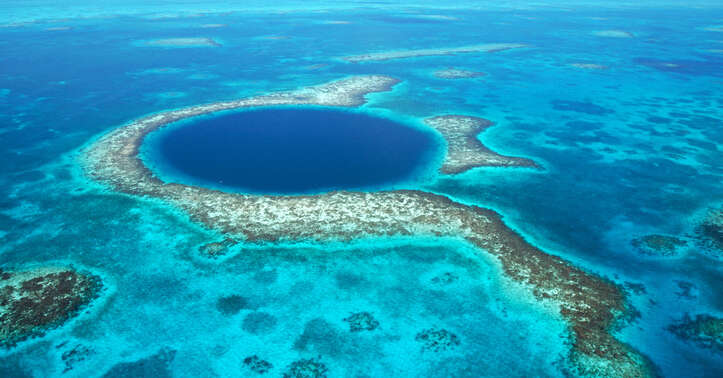

- Blue bonds are under scrutiny as Belize seeks to restructure its debt with ESG targets, while the Asian Development Bank has just issued one itself.
- Organisations such as The Nature Conservancy and Climate Policy Initiative are seeking to develop such markets for positive environmental impact.
- But there are doubts as to the true impact of blue bonds, whether they could be applied to larger markets, and the level of potential demand.
The tiny country of Belize – with a population of 400,000 and a reputation as a “serial defaulter” – is seeking to restructure some of its debt as a so-called blue bond incorporating ESG-related targets, while just last month the Asian Development Bank (ADB) issued its first blue bond to finance ocean-related projects in Asia and the Pacific
These moves once again place the spotlight on a fairly new and specific area of finance and raise questions around their risks, true impact and scalability. At least six blue bonds – which fund projects related to ocean conservation – have been issued globally, the first in 2018 by the Seychelles government, but precise numbers are hard to come by.
Yet The Nature Conservancy, a global conservation non-government organisation, is leading what it calls an “audacious” plan to develop the market and thereby extend protection to 15% more of the ocean. According to the Marine Protection Atlas, a project of the Marine Conservation Institute, in April this year just 7.8% of the ocean fell under marine-protected areas, which are akin to underwater national parks, so the plan would nearly treble the expanse of protected water.
Launched in 2019, The Nature Conservancy’s Blue Bonds for Conservation initiative refinances and restructures debt for countries with ocean protection conditions. It is currently working with the government of Belize to restructure the country’s sovereign debt into a blue bond aimed at protecting the country’s coral reef.
The Central American nation has asked holders of its $533m of 2034-maturity debt, which comes with a 4.94% coupon, to tender their notes at a 45% discount. It would thereby reduce the country’s debt by some 9% of GDP. The deal is unusual as the government is offering to pay bondholders in cash. It will go ahead if 75% of bondholders agree by 19 November. Market activity reportedly indicates the deal will be achieved, with the bonds trading at 39.50 prior to the announcement but rising to 48.50 days after.
There are other moves taking place similar to The Nature Conservancy’s scheme. San Francisco-based think tank the Climate Policy Initiative argued in May that environmentally related ESG debt swaps, which are traditionally focused on low-income countries, should be made available for middle-income countries in light of the pressure the Covid-19 crisis has put on fiscal finances and the urgency of spending on climate projects (see also chart below).
Investor caution
On the face of it such proposals are worthy ones, but investors have some caveats.
Vontobel Asset Management holds roughly 10% of the bond, and Carlos de Sousa, an emerging market debt manager at the Swiss fund house, says the plan has good prospects. Some $23m of the $330m restructure is being allocated to marine preservation. De Sousa says the proposed bond will have a smoother maturity profile and short-term debt relief that should improve its sustainability by reducing the principal and the payments.
However, he adds: “We don’t know it if will work long term or not and whether Belize will improve its fiscal finances sufficiently to avoid restructuring, because [the country] is a serial defaulter.”
Similarly, Alina Eidt, an emerging market fixed income portfolio manager at Germany’s Union Investment, has reservations about such instruments, though her company does not hold any Belize debt.
The Frankfurt-based fund house has a substantial amount of sovereign debt in its €427.2bn portfolio and has conducted ESG-related engagement in this area. In July it published a case study on engaging with Brazil, where forest fires are threatening the Amazon’s role as a vital carbon sink.
Eidt sees investors becoming more open to discussing new instruments such as ocean-related sovereign ESG debt swaps. And she sees it as a positive that the Belize proposal involves Eurobond holders that are mainstream allocators. The Seychelles sovereign debt swap involved Paris Club creditors focused on finding solutions to payment difficulties experienced by debtor countries.

But there remain question marks around the products, Eidt says, including in relation to their risk level and the soundness of economic fundamentals. Such factors “have to be prioritised to the same degree as environmental protection”, she adds.
The Nature Conservancy is funding the Belize debt buy-back through its Blue Bond for Conservation initiative, but the full details of the proposed deal are yet to be announced. Bondholders have less visibility on the buy-back side of the transaction, De Sousa says, but The Nature Conservancy has a lot of experience in such instruments. “They don’t know the country, but they have expertise in issuing these blue bonds,” he adds.
The Nature Conservancy arranged the first-ever sovereign debt swap focused on ocean protection for the Seychelles. The terms of the 2018 deal – a $15m ten-year bond with a coupon of 6.5% – involved impact targets to protect a third of the Seychelles' Indian Ocean waters. It achieved its objectives last year, with 32% of the water – 410,000km² – designated as Marine Protection Areas, up from just 0.04% previously.
Whether Vontobel Asset Management buys the blue bond that Belize hopes to issue will depend on the terms of the new deal, including how much the US International Development Finance Corporation will provide as a partial guarantee to reduce risk, says de Sousa.
Rising interest in life below water
Maritime conservation – the subject of Sustainable Development Goal (SDG) 14: Life Below Water – has attracted far less attention from capital allocators than, for instance, SDG 13: Climate Action, as Capital Monitor research shows. But it looks to be climbing the priority list for financiers, and with good reason.
Some 14% of the world’s coral was lost between 2009 and 2018, the Global Coral Reef Monitoring Network reported on 6 October in the largest analysis of reef health worldwide to date. Coral reefs are home to close to 30% of all known marine species. In particular, the Belize Barrier Reef Reserve System is a significant habitat for under-threat creatures, including marine turtles, manatees and the American marine crocodile.
We don’t know it [the debt restructuring] will work long term and whether Belize will improve its fiscal finances sufficiently to avoid restructuring. Carlos de Sousa, Vontobel Asset Management
But capital market solutions to ocean degradation are few and far between. There is the $106m Circulate Capital Ocean Fund focused on tackling Asia’s ocean plastic crisis and the Global Fund for Coral Reefs, a blended finance vehicle backed by French bank BNP Paribas and French asset manager Mirova, alongside charitable foundations and UN agencies. The UN, in 2019, developed the Sustainable Blue Economy Finance Principles.
But blue bonds have been scarce. After the Seychelles deal came a SKr2bn ($230m) bond from Nordic Investment Bank in January 2019. Then, in September last year, Bank of China’s Paris and Macau branches, respectively, issued $500m in three-year blue bonds and $442.5m in two-year blue bonds, while Qingdao Water Group inked a $46.4m issue in November 2020.
When the ADB issued its blue bond last month, Japanese insurance firms jumped in. Dai-ichi Life Insurance Company bought all A$208m of the 15-year paper and local rival Meiji Yasuda Life bought all NZ$217m ($151m) of the ten-year notes.
Fiji is also reportedly working with the UK on a sovereign blue bond, having been the first emerging market sovereign to issue a green bond, in 2017.
Growing interest in blue bonds in some quarters reflects rising attention being paid to the link between government debt and climate risk. In June, the retirement schemes of UK telecoms provider BT and the Church of England partnered international bodies on an initiative to help asset managers and owners measure, monitor and compare climate change governance and performance related to sovereign debt.
Questions over scalability
But whether there is sufficient appetite to issue or buy blue bonds or environmentally focused debt swaps for The Nature Conservancy to achieve its aims is less clear.
Certainly, investors are being very tolerant with issuers of green bonds and other sustainable bonds as to what they accept as green or sustainable use of proceeds, says Fergus McCormick, director of sovereign research at the Emerging Markets Investors Alliance, a New York-based non-governmental organisation. This is because they are required to have a green portion or an ESG portion of what they do in their portfolio, he adds, so there is “enormous appetite” for such debt.
It is easier for smaller developing countries like Belize and the Seychelles to default and restructure than for larger ones. Moritz Kraemer, formerly of S&P Global
However, Union Investments’ Eidt says the Belize and Seychelles deals are too small and niche for certain clients that demand a certain level of liquidity.
Moritz Kraemer, former global chief rating officer for sovereign ratings at S&P Global Ratings, also questions whether the model can grow. While the Seychelles deal was a great step forward, he says, “we need to be very careful when we think about how scalable it is”.
He also suspects interest in these deals are “a bit of green window dressing as everyone is trying to appear to be on the forefront of the movement to save the world”.
What’s more, he says, it is easier for smaller developing countries like Belize and the Seychelles to default and restructure than for larger ones, which fear a mark down on their credit rating.
It is certainly trickier for holders of debt issued by substantially bigger emerging markets to be as accommodating in respect of such a plan – however positive the potential impact.






